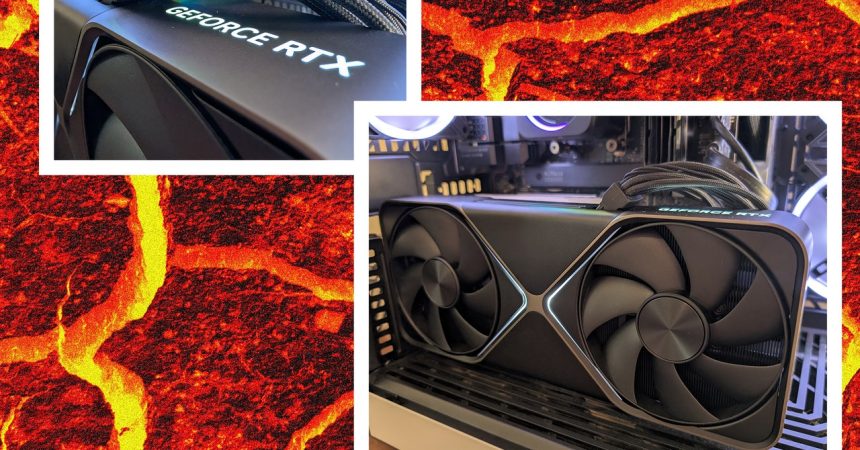Nvidia’s RTX 5080 graphics card presents a compelling alternative to the exorbitant RTX 5090, offering a more accessible entry point into high-end PC gaming. While the RTX 5090 commands attention with its extreme 4K gaming capabilities and AI-powered enhancements, its $2,000 price tag places it beyond the reach of many. The RTX 5080, priced at $1,000 for the Founders Edition, strikes a more reasonable balance, albeit still a significant investment. It caters to a wider audience with its performance profile aligning with more common gaming setups, including monitor resolutions, game choices, and existing power supply capacities. This review delves into the RTX 5080’s performance, comparing it to its more powerful sibling and assessing its prowess in popular and enduring game titles.
The RTX 5080 shares the same compact form factor as the RTX 5090, retaining a true two-slot design that ensures compatibility with most PC cases. This design choice is a welcome departure from bulkier predecessors and sets a positive precedent for third-party manufacturers. A significant advantage of the RTX 5080 lies in its reduced power consumption. While the RTX 5090 draws a substantial 575 watts, the 5080 requires only 360 watts, utilizing the same new power connector. Both Founders Edition cards include an adapter for this connector, and it is anticipated that partner cards will follow suit. This lower power draw translates to a less demanding overall system power requirement, with Nvidia recommending an 850-watt power supply for the RTX 5080 Founders Edition. This lower requirement makes the card more compatible with existing gaming rigs, eliminating the need for an expensive upgrade to a 1,000-watt or higher power supply.
The RTX 50 series introduces an enhanced version of Nvidia’s AI-powered DLSS technology, incorporating multi-frame generation. This technique leverages AI to generate up to three frames between existing frames, effectively boosting frame rates and enhancing smoothness. While multi-frame generation can introduce minor visual artifacts in specific scenarios, such as objects overlapping at different depths, these artifacts are generally subtle and often overshadowed by the benefits of increased frame rates. The higher frame rates result in frames being displayed for shorter durations, contributing to a more fluid and responsive gaming experience. A detailed analysis of the image quality impact of multi-frame generation can be found in the accompanying RTX 5090 review.
To evaluate the RTX 5080’s performance with DLSS multi-frame generation, Cyberpunk 2077 serves as a suitable benchmark, given its demanding nature and support for this technology. Further testing will encompass a range of other titles to provide a comprehensive performance overview. Preliminary observations suggest that the RTX 5080 delivers a compelling gaming experience, particularly in relation to its price point. Its performance aligns well with the expectations of gamers seeking high-end visuals and smooth frame rates without resorting to the extreme cost of the RTX 5090.
Beyond Cyberpunk 2077, the RTX 5080’s performance will be assessed across a diverse selection of games, both graphically demanding and less intensive, to showcase its versatility and capability across different gaming scenarios. This comprehensive evaluation will provide a more nuanced understanding of the card’s performance characteristics and its suitability for various gaming preferences. The analysis will also explore the balance between visual fidelity and performance, demonstrating how the RTX 5080 handles different graphical settings and resolutions.
In conclusion, the Nvidia RTX 5080 emerges as a compelling option for gamers seeking high-end performance without the premium price tag of the RTX 5090. Its efficient power consumption, compact design, and robust performance, especially when leveraging DLSS multi-frame generation, position it as a strong contender in the high-end GPU market. While still a substantial investment, the RTX 5080 offers a more accessible pathway to experiencing the latest advancements in gaming technology without requiring a complete system overhaul. Its compatibility with existing power supplies and its ability to deliver smooth frame rates at high resolutions make it an attractive choice for gamers looking to upgrade their graphics card without breaking the bank.



